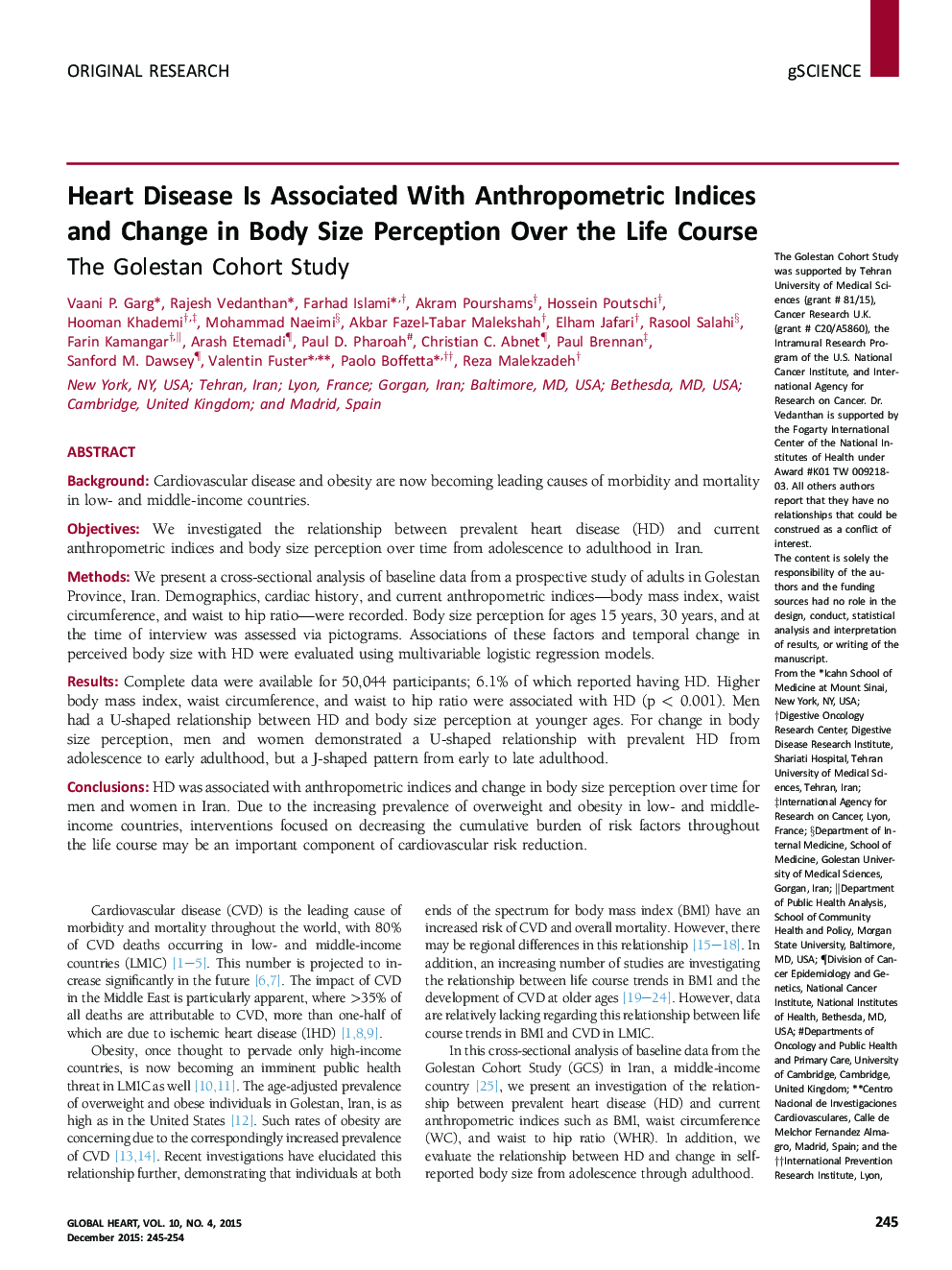| کد مقاله | کد نشریه | سال انتشار | مقاله انگلیسی | نسخه تمام متن |
|---|---|---|---|---|
| 5958605 | 1575720 | 2015 | 11 صفحه PDF | دانلود رایگان |
- We present a cross-sectional analysis of baseline data from a prospective study of adults in Golestan Province, Iran, to investigate the relationship between prevalent heart disease (HD) and current anthropometric indices and body size perception over time from adolescence to adulthood in Iran.
- Body size perception for age 15 years, age 30 years, and at the time of interview was assessed via pictograms.
- For men and women, higher body mass index, waist circumference, and waist-hip ratio were associated with HD.
- Men had a U-shaped relationship between HD and body size perception at younger ages.
- For change in body size perception, men and women demonstrated a U-shaped relationship with prevalent HD from adolescence to early adulthood, but a J-shaped pattern from early to late adulthood.
BackgroundCardiovascular disease and obesity are now becoming leading causes of morbidity and mortality in low- and middle-income countries.ObjectivesWe investigated the relationship between prevalent heart disease (HD) and current anthropometric indices and body size perception over time from adolescence to adulthood in Iran.MethodsWe present a cross-sectional analysis of baseline data from a prospective study of adults in Golestan Province, Iran. Demographics, cardiac history, and current anthropometric indices-body mass index, waist circumference, and waist to hip ratio-were recorded. Body size perception for ages 15 years, 30 years, and at the time of interview was assessed via pictograms. Associations of these factors and temporal change in perceived body size with HD were evaluated using multivariable logistic regression models.ResultsComplete data were available for 50,044 participants; 6.1% of which reported having HD. Higher body mass index, waist circumference, and waist to hip ratio were associated with HD (p < 0.001). Men had a U-shaped relationship between HD and body size perception at younger ages. For change in body size perception, men and women demonstrated a U-shaped relationship with prevalent HD from adolescence to early adulthood, but a J-shaped pattern from early to late adulthood.ConclusionsHD was associated with anthropometric indices and change in body size perception over time for men and women in Iran. Due to the increasing prevalence of overweight and obesity in low- and middle-income countries, interventions focused on decreasing the cumulative burden of risk factors throughout the life course may be an important component of cardiovascular risk reduction.
Journal: Global Heart - Volume 10, Issue 4, December 2015, Pages 245-254.e1
